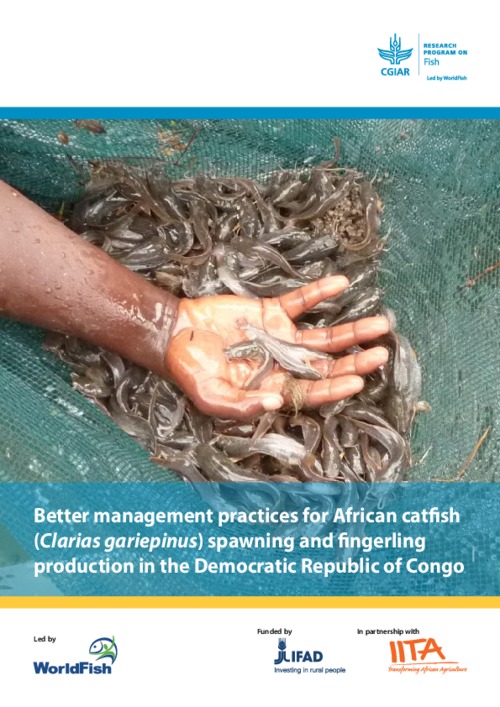Better management practices for African catfish (Clarias gariepinus) spawning and fingerling production in the Democratic Republic of Congo

In the Democratic Republic of Congo (DRC), there is growing demand for African catfish (Clarias gariepinus) as food. Currently, the country’s main sources of African catfish are rivers such as the Congo River. Other sources include formal and informal fish imports from neighboring regions in Uganda, Zambia and Rwanda, as well as other countries. Coupled with this demand is the potential to culture African catfish within the DRC. However, this potential is contingent on (1) building and equipping facilities to be able to produce seed/fingerlings and (2) farmers being able to access them in various regions throughout the country. Until recently, the DRC had hardly any catfish hatcheries nor the associated capacity to produce fingerlings. However, recent interventions by government, private sector and development partners have led to the establishment of a few hatcheries, and the building capacity for these hatcheries will contribute to the growth of the catfish industry in the DRC. Catfish fingerling production could be successful in the DRC if proper guidelines and better management practices (BMPs) are followed. BMPs are necessary for such important aspects as broodstock feeding and handling, egg and larval rearing, fry nursing and fingerling grading, and water quality management. Wherever BMPs are not adhered to, losses in hatcheries can reach as high as 100%. The objective of this document is to provide information on BMPs to prevent certain common mistakes during commercial production. This will minimize losses, especially at the larval, fry and fingerling stages of the production cycle.
Permalink
Date Available
Type
Publisher
Countries
Copyright
CC-BY-NC-4.0
Research Themes
Topics
Language